When Ger Luijten introduced his new exhibition at Fondation Custodia describing “portraits of rocks” on the music of Simon and Garfunkel‘s “I am a rock”, everyone clapped in the audience. This outstanding director of the Dutch foundation is certainly the most creative curator of classical art at the moment and when he went on to read a poem on trees by the Swiss writer Philippe Jacottet (who died last February), we were all moved and inspired. The new exhibition called “Sur le motif, Peindre en plein air” “True to Nature, Open-air painting in Europe” describes the numerous painters (1780-1870) who, a century before the Impressionists, went and painted in the open air with oil. The show started at the National Gallery in Washington last autumn and will continue at the Fitzwilliam in Cambridge next May. It is totally fascinating and a great moment of emotion.
The atmosphere was of great excitement and passion to see the exhibition open at last in Paris after a year’s hiatus. The idea for this very original show of 150 studies in oil, came from the large collection held by Fondation Custodia, the 26 paintings lent by a private collector with an “unerring eye”, Alice Goldet, the erudition of John Harvey Bergen, and those of the two museums in Washington and in Cambridge. These wonderful characters presided over the choice and the layout of the works which fit perfectly in the hotel particulier of the Custodia Foundation in Paris. The first room is dedicated to trees, the second one to rocks, the third one to waterfalls and seashores. Then come volcanoes and skies, Italian landscapes outside Rome and in Capri. All paintings are so intimate and original thanks to the way the themes are treated that I could not leave these rooms for a long time. I just had to keep looking at each little rock and each leaf of a tree.
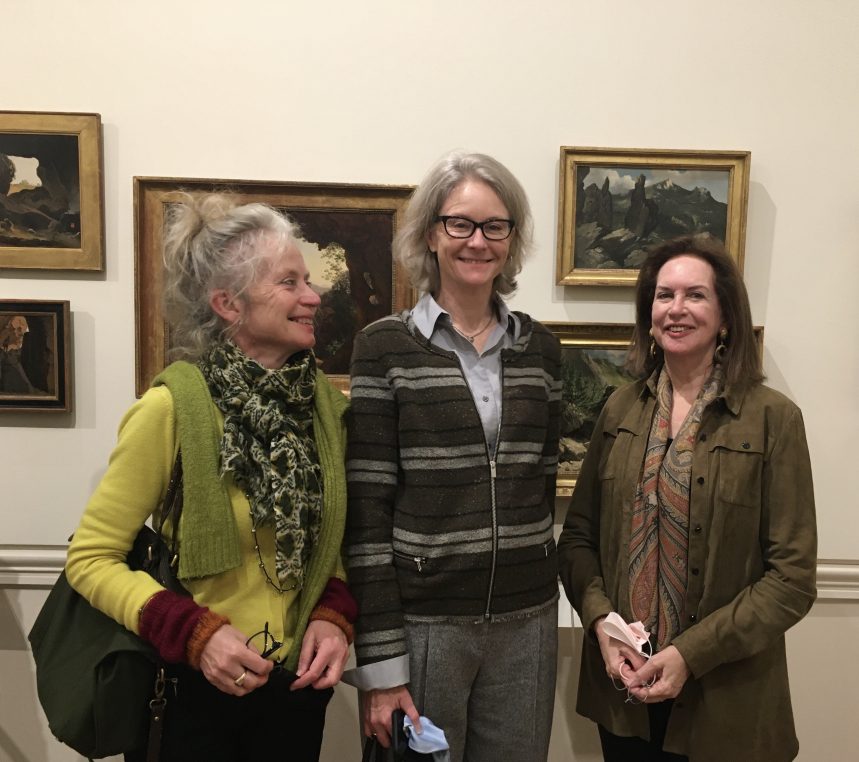
Jane Munro from the Fitzwilliam, Mary Morton from the National Gallery in Washington and Alice Goldet, the private collector
Four skies by Johann Jakob Frey are hanging together and give a large variation of purples and greys. When I asked Jane Munro which were her favorite paintings she mentioned Johan Christian Clausen Dahl’s volcanoes of the Neapolitan coast which belong to the Fitzwilliam Museum and Giuseppe de Nittis “Eruption of Vesuvius”. In the catalog, Mary Morton writes about waterfalls and sea views but also on rocks. When you see Vilhelm Kyhn’s “Rocks at low tide”, you understand what Ger Luijten meant by “portraits of rocks”. They are not a decorative item in the landscape. They make the landscape!
I was very moved by Théodore Caruelle d’Aligny‘s “View of Olevano”, 1827, where a tree stands on top of a hill with a village in the background. The importance given to the tree in the foreground is very obvious. There are a number of Corot and Granet paintings, and also an interesting oil on paper, “Village in Brittany” by Odilon Redon which belongs to Fritz Lugt’s collection at Custodia. A landscape by Toulouse Lautrec, painted in Arcachon when he was 19, is very surprising in its abstract style.

Johann Jakob Frey, “Dawn on the Pontine coast”, “Storm on the Pontine coast”, “Study of sky and clouds with Mount Circe on the Pontine Islands”, “Sun effects at sunset”, private collection
What is extraordinary about this choice of 150 paintings is that when seen alone, they might seem modest and even, for some, uninteresting. In his article in the Washington post in 2020, art critic Sebastian Smee said: “Could it be that one of the most important things going on in the nation’s capital this winter is a modest display of 19 th century oil sketches at the National Gallery of Art?” and it is a perfect sum up of what I felt. The works are generally small and take their strength and value as a group in the fabulous hanging in the pretty rooms of the foundation.
It has taken Alice Goldet forty years to create her collection, and most of these paintings were acquired for a modest sum from dealers who eventually became friends. These views were not fashionable fifty years ago and putting the show together required a lot of research on little known painters, a common passion expressed by and with the three museum curators. The works are the result of a sharp visual observation of the landscapes, of painting in the open for the young arts students in Rome encouraged by the romantic sensitivity of the beginning of the XIX th century.
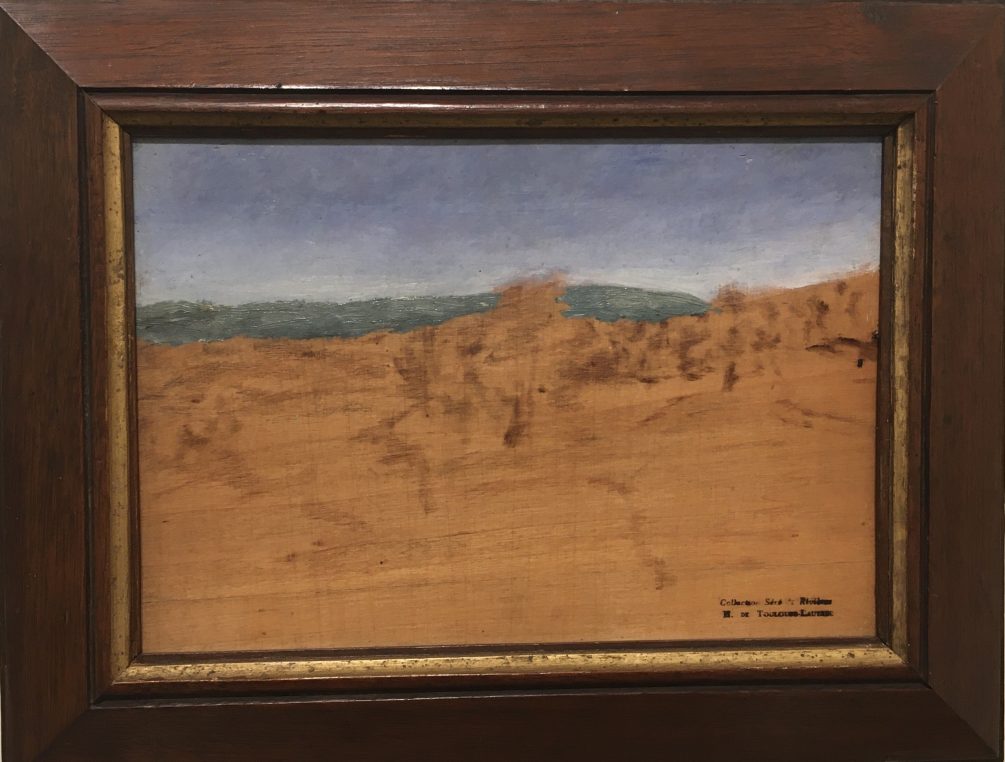
Henri de Toulouse Lautrec, “Landscape with dunes near Arcachon”, 1883-1885, oil on wood, Fondation Custodia, Collection Fritz Lugt
The mix of famous artists (Constable, Isabey, Bonington, Degas, Bidault) and fairly unknown ones, gives more sense to the exhibition which is really the study of a movement and of a new technique. It is the perfect illustration of what we love in art, rediscovering forgotten artists and understanding how they worked and how they fit into their time. There are some uniquely emotional paintings like this study for a “Parasol Pine” by George Augustus Wallis or “Views of the Pyrénées” by Louise-Joséphine Sarazin de Belmont (a protégée of Empress Joséphine) collected in a large wood panel. And of course the snow on Trinità dei Monte in Rome by André Giroux which belongs to the National Gallery in Washington.
You will have understood by now that this is the reverse of a blockbuster exhibition where paintings are hung two meters apart to let the crowds see them in flocks. Walking into the rooms of the Custodia Foundation is like entering a very secret paradise, where each work speaks to your heart. The modesty of the themes allows to create your own imaginary world around them. And I loved the shared passion between these four art lovers, who seemed to have had so much fun during the numerous years of preparation. Those of you who cannot come to Paris can catch up with the exhibition in Cambridge next May but also acquire the catalog in English or in French. It is a fascinating read.
Downstairs, you can also discover a retrospective of Charles Donker, the Dutch artist who has devoted fifty years to painting and engraving birds, trees and landscapes in Europe, Latin America and Israel. His ink paintings of hay stacks are brilliant and his watercolors of the tropical forest in Ecuador are a perfect prolongation of the 19 th century painters upstairs. And he has also done many excellent eau forte prints which can be seen at Galerie Documents 15.
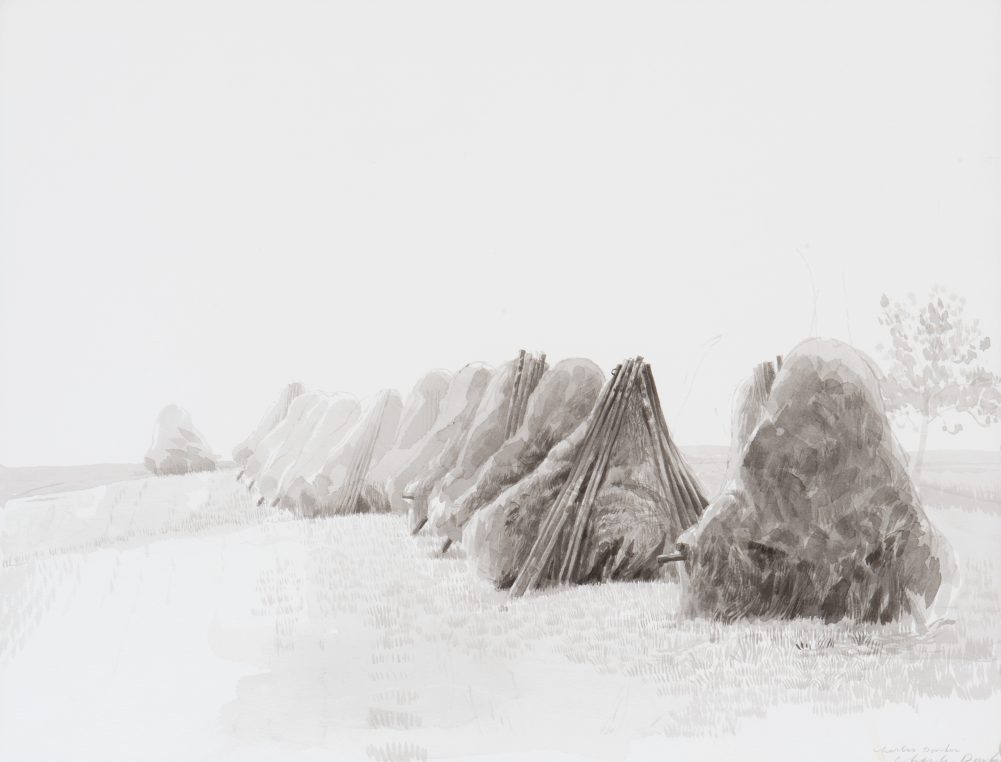
Charles Donker, Hay stacks in Leermens, 1980, ink on paper, Fondation Custodia, Collection Frits Lugt, Paris
The two exhibitions are open until April 3 at Fondation Custodia, 121 rue de Lille near the Assemblée Nationale. Charles Donker’s prints can be acquired at Galerie Documents 15.
Share this Post
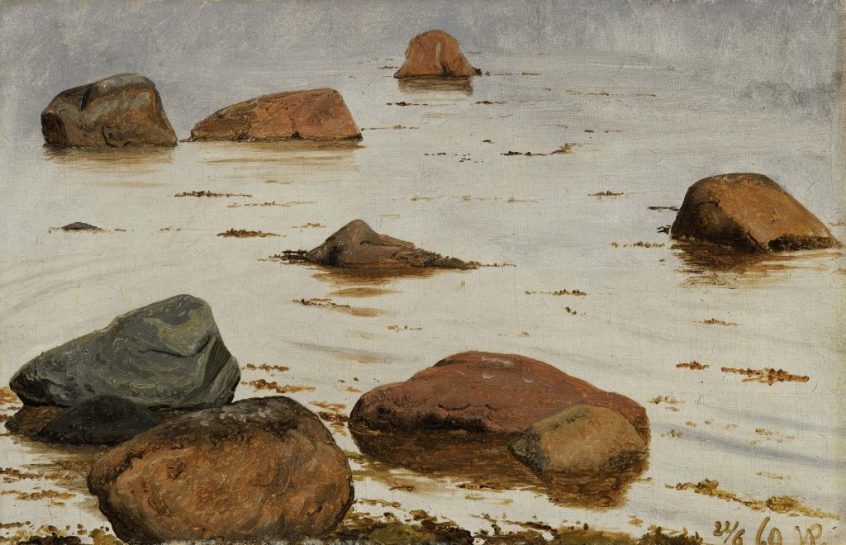
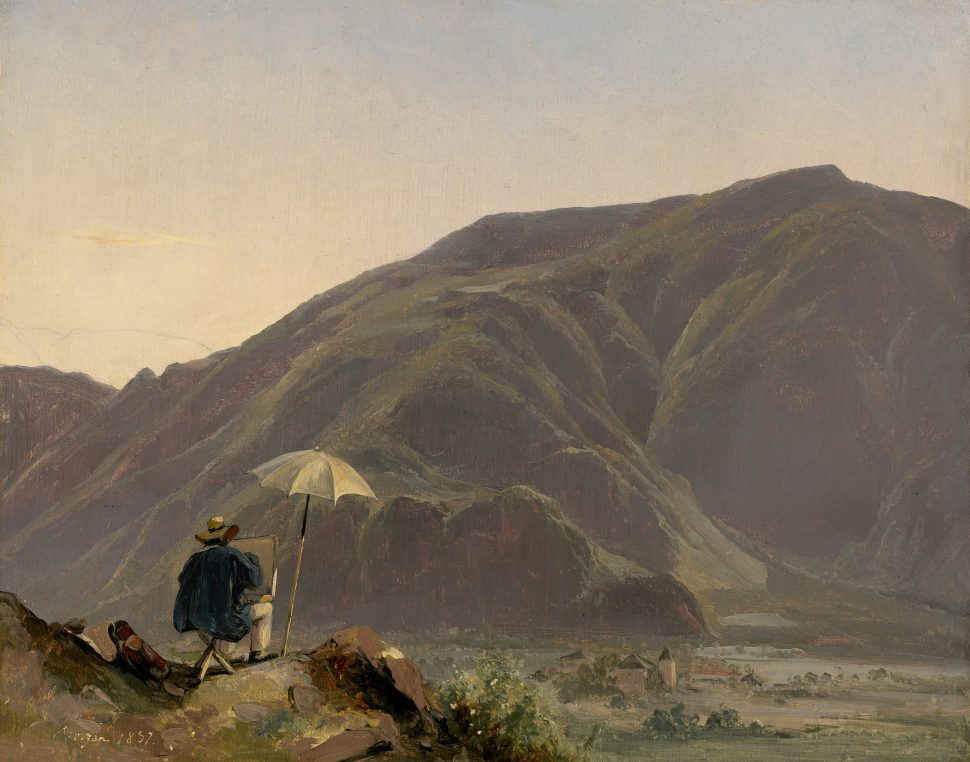

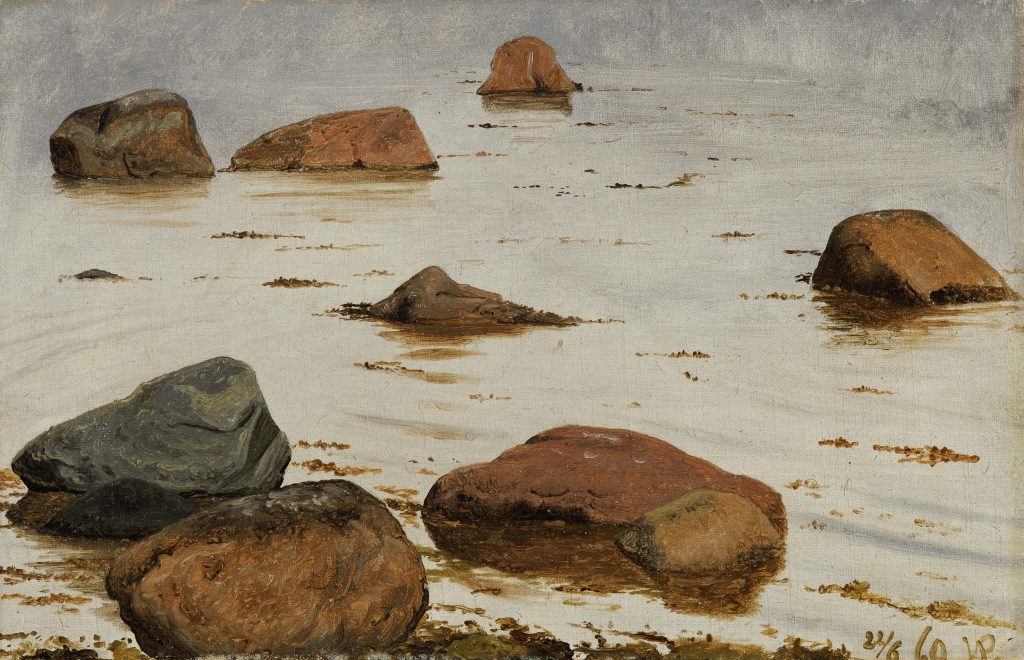
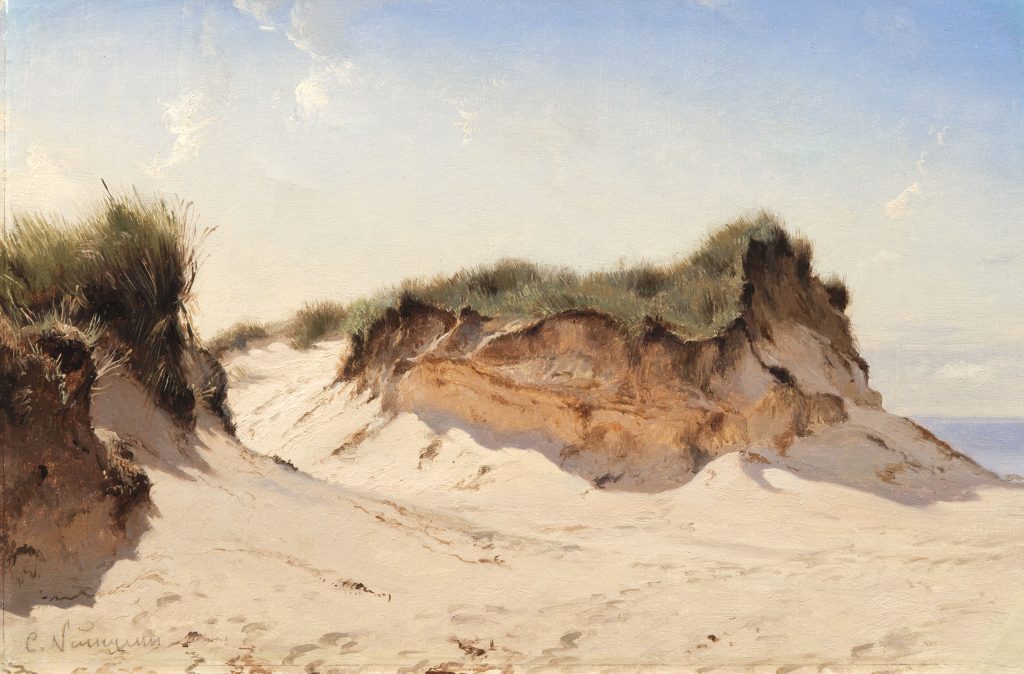
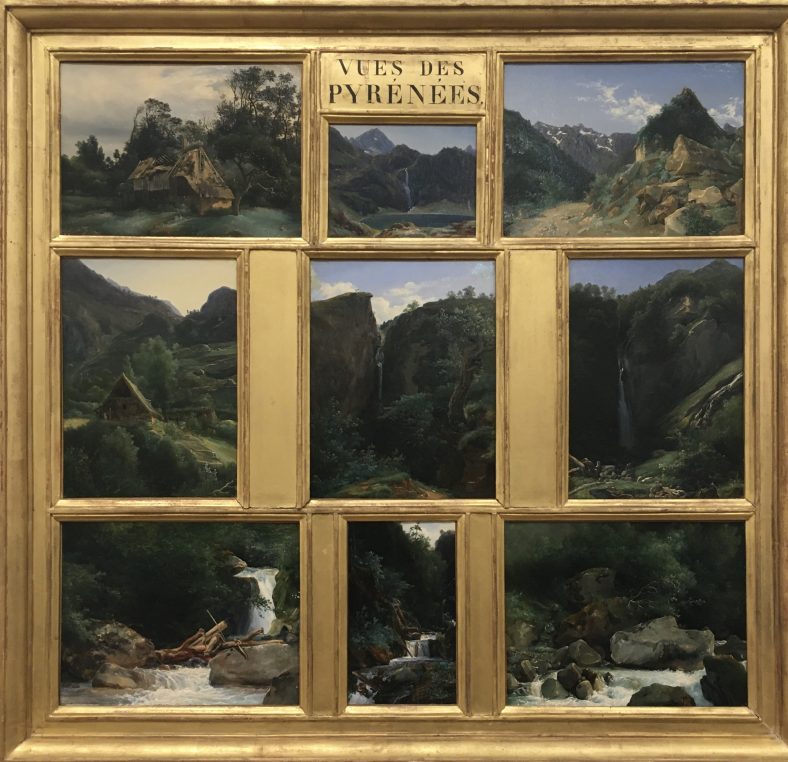
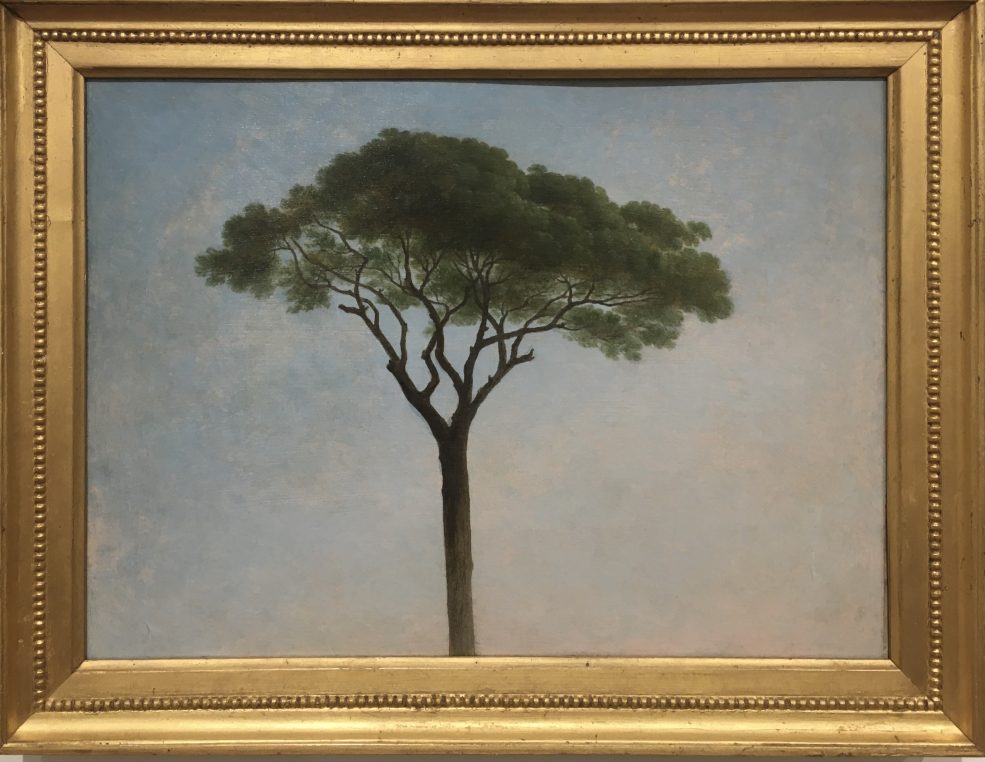
2 Comments on “Open Air painting at Fondation Custodia is a true emotion”
Thank you for reminding us not to miss this exhibition.
Fondation Custodia is a very special place.
Please add me to your subscription list.
Thank you!